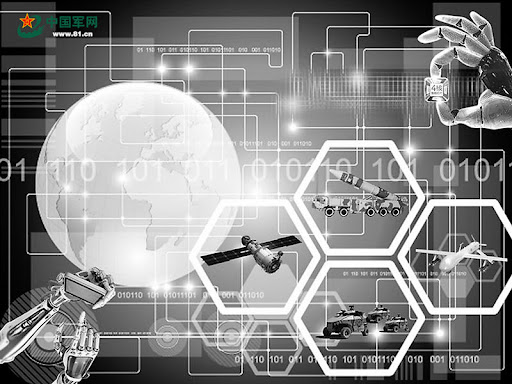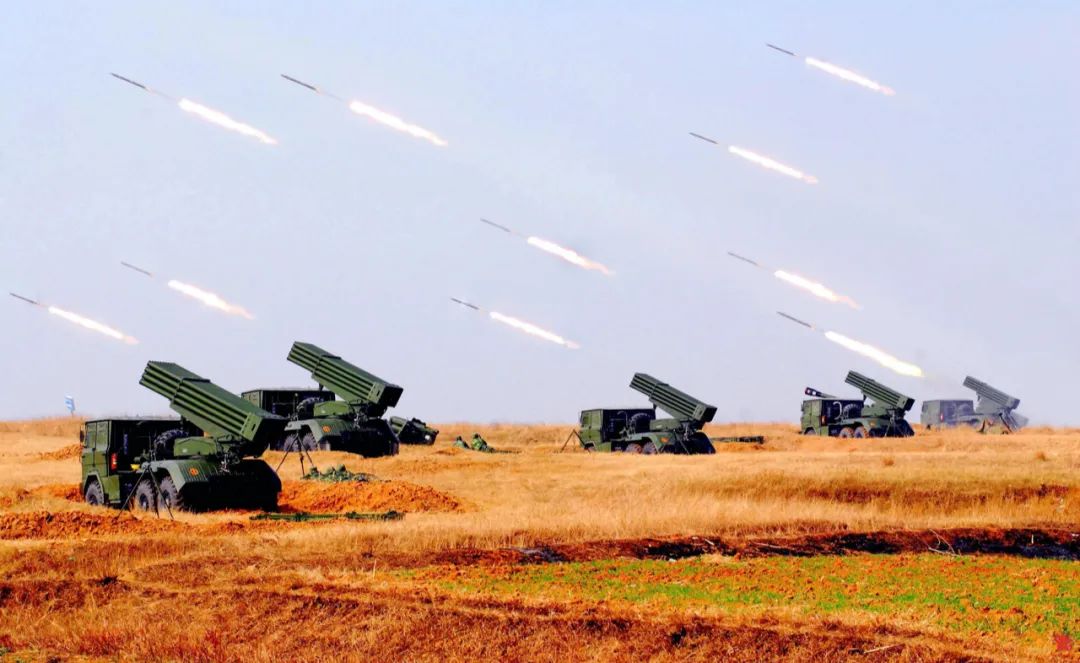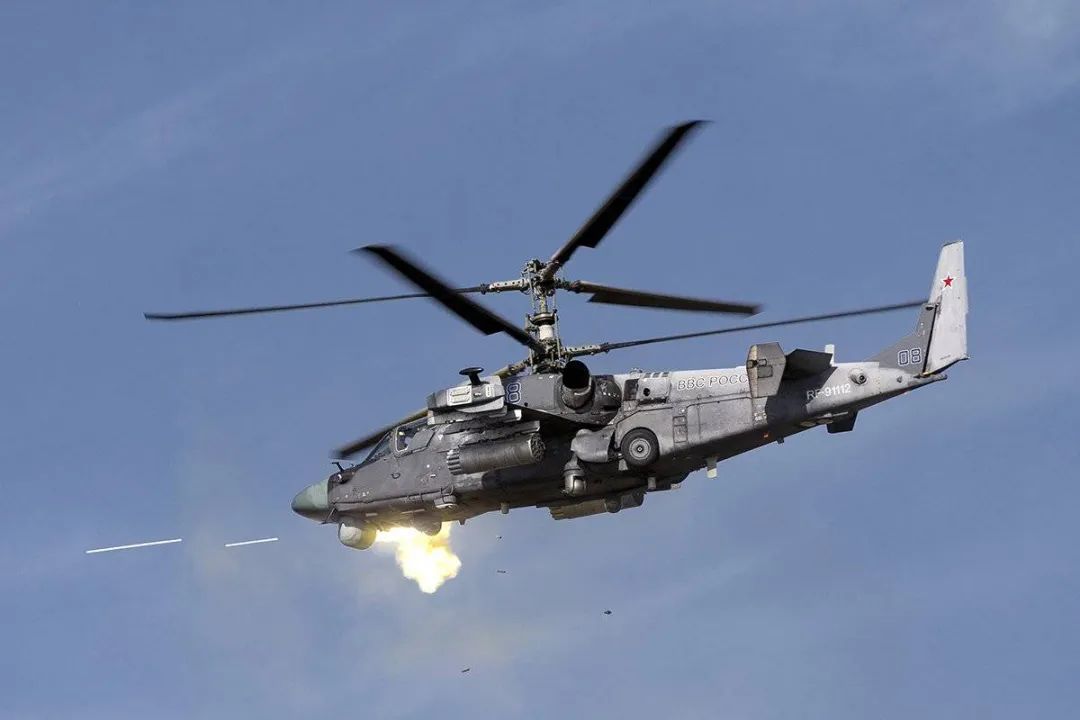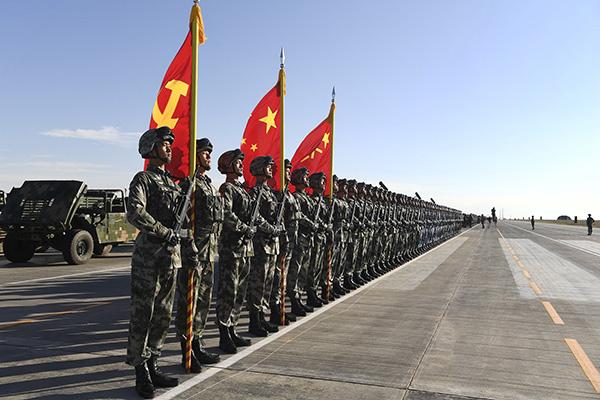智慧戰爭時代的中國軍事高等教育
現代英語:
“Military academies were born and built for war”. At the opening ceremony of the 2019 military academy principals training camp, President Xi proposed a new era of military education policy, pointing out the direction for the military academies to cultivate high-quality, professional new military talents. At present, the form of war is accelerating towards informatization and intelligence. What kind of soldiers are needed to win future intelligent wars, and how military higher education can cultivate talents to adapt to intelligent wars are major issues before us.
The war form is accelerating towards intelligence
The form of war is a staged expression and state of war history that is mainly marked by the technical attributes of main battle weapons. So far, after experiencing cold weapon wars, hot weapon wars, and mechanized wars, war forms are accelerating their development towards information-based and intelligent wars. The increasingly widespread application of advanced technologies such as big data, the Internet of Things, artificial intelligence, biotechnology, and brain science in the military field is becoming an important driver of the new military revolution, giving birth to new unmanned, autonomous, and intelligent warfare forms, and changing the traditional The winning mechanism of war. In 2014, a foreign military think tank released a research report titled “War in the 20YY∶ Robot Era”, believing that a storm of military change marked by intelligent armies, autonomous equipment, and unmanned warfare is coming, and it will develop intelligent combat platforms, information systems and decision-making support systems, as well as new weapons such as directional energy, hypersonic speed, bionic, genetic, and nanometer By 2035, an intelligent combat system will be initially built, and by 2050, it will develop to an advanced stage, fully realizing intelligent or even unmanned combat platforms, information systems, and command and control. New weapons such as bionics, genes, and nanometers will enter the battlefield, and combat space will be further expanded. Expand to biological space, nanospatial space, and intelligent space.
In recent years, as people’s research on the human brain continues to deepen, brain-computer interface technology is becoming increasingly mature. In the future, the exchange of information between humans and the external world will no longer be limited to the senses. Direct information exchange between the brain and the outside world can also be achieved through chips. People and people, people and things are fully interconnected, and humans may transcend the Internet and the Internet of Things and enter the intelligent era supported by the Internet of Things. In the era of brain networking, soldiers’ brains are directly connected to combat platforms, information systems, and decision-making support systems. With the assistance of technologies such as quantum computing and cloud platforms, decisions will be made. The targets of attack will expand to human thoughts and actions, matter, energy, information and The mind is integrated. Some domestic experts believe that under the influence of artificial intelligence technology, the winning mechanism of future wars will shift from information-based warfare “information-led, system confrontation, precise strike, joint victory” to intelligent warfare “intelligent-led, autonomous confrontation, traceability Strike, cloud brain victory” transformation, following matter, energy, and information, cloud intelligence that integrates humans and machines becomes the key to determining the outcome of a war. The transformation of this “intelligent war form” is accelerating, and any hesitation may have unimaginable consequences.
However, it should be noted that man is always the most fundamental element, no matter how the war develops. The intelligent war form will promote changes in the functional role of military personnel, and will put forward higher requirements for military personnel’s ability quality. Cognitive ability may surpass knowledge and skills and become the core ability of military personnel.
Intelligent warfare requires military personnel to upgrade and reconstruct their comprehensive quality
According to the “talent growth cycle”, soldiers who are currently receiving higher education will become the main force in military combat training in more than 10 years, and will also become the first main force to meet the challenges of intelligent warfare. At present, our military’s higher education still has some shortcomings in the design of talent training goals. It does not pay enough attention to the ability to adapt to future changes in the intelligent battlefield. There is still a certain gap between talent training goals and the demand for intelligent warfare. On July 23, 2020, when President Xi inspected the Air Force Aviation University, he emphasized the need to adhere to cultivating people with moral integrity, educating people for war, strengthening military spirit education, strengthening the fighting spirit, and comprehensively laying a solid foundation for the ideological and political, military professional, scientific and cultural, and physical and psychological qualities of pilot students. Base. Implementing President Xi’s important instructions and benchmarking against the needs of future intelligent warfare, there is an urgent need to build a higher-level military talent training goal with thinking as the core, and accelerate the upgrading and reconstruction of the comprehensive quality of military personnel.
Intelligent warfare is a complex giant system that integrates multiple fields. Its intelligence-based characteristics and iterative and changeable development trends are changing the role of soldiers in war. Soldiers may gradually move from the front desk of the war to the backstage, from direct face-to-face combat to human-machine coordinated combat, and from front-line charging to back-end planning and design of the war. To be competent in functional roles such as human-machine collaboration, planning and designing wars, in addition to ideological, political and physical psychology requirements, in terms of military profession and science and culture, soldiers should focus on improving their knowledge and ability in the following five aspects: First, multi-disciplinary Integrate the knowledge structure, master the core principles of multiple intelligent war-related disciplines such as nature, military, cognitive psychology, and network intelligence, and be able to integrate knowledge across disciplines Guide military practice; the second is strong cognitive ability, with logical thinking, critical thinking, and systematic thinking abilities, and the ability to use scientific methods to analyze and infer combat problems; the third is human-machine collaboration ability, deeply grasp the characteristics and rules of intelligent warfare, and be proficient in operating Combat platforms, command and control systems, and decision-making support systems can control a variety of intelligent weapons and equipment to achieve efficient human-machine collaboration; fourth, innovative capabilities Have keen scientific and technological perception and strong creativity, and be able to grasp the forefront of science and technology, innovate combat styles, and master the laws of war development; fifth, self-growth ability, be able to accurately recognize oneself, reasonably plan military career, and freely use information means to acquire new knowledge, new technologies, new methods, constantly improve the knowledge structure, improve cognitive abilities, and better adapt to the complex and ever-changing development of military revolutions.
Find the focus of “paramilitary higher education reform”
At present, the superimposed advancement of informatization and intelligence has brought greater complexity to the talent training work of military academies. It is necessary to not only meet the needs of real-life information operations, but also lay the foundation for adapting to intelligent warfare. The following should be focused on Work.
Reconstructing the curriculum system. The curriculum system supports the formation of the talent knowledge structure. In order to “cultivate military talents that meet the needs of intelligent warfare and achieve the training goals of military major, science and culture, we should break the practice of designing curriculum systems with a single major as the background and establish a “general + direction” curriculum system”. General courses are based on existing natural science and public courses, adding courses such as mathematical logic, mathematical modeling, critical thinking, network basics, artificial intelligence, cognitive neuroscience, systems engineering, etc., and establishing a cross-field and cross-disciplinary horizontal course system, expand students’ knowledge, build the knowledge structure urgently needed for intelligent warfare, and lay a broad knowledge foundation for their lifelong growth. Direction courses are to establish a subject professional direction, set up a vertical course system of mathematical science, professional foundation, and professional positions, build a solid professional background, and cultivate students’ ability to use professional theories to solve complex combat training problems.“ The general knowledge +direction” curriculum system helps build a “T”-shaped knowledge structure to meet the needs of military talents to adapt to diverse and intelligent warfare.
Deepen classroom reform. Educational neuroscience believes that education is the reshaping of students’ brains, and classrooms are the main position for reshaping students’ neural networks. They play an irreplaceable role in the formation of high-level cognitive abilities required for intelligent warfare. Continuously deepening classroom reform is The current key task of military higher education. You have to see that a classroom with only knowledge understanding is far from a good classroom. All human behaviors, thoughts and emotions are controlled by the brain, and every knowledge, thought and emotion corresponds to the specific neural network of the brain. Therefore, classroom reform should focus on students’ learning and follow the cognitive laws of the human brain to attract and maintain attention as the starting point, establish a scientific thinking framework, and mobilize students to think proactively. Usually, the teaching method pointing to higher-order abilities has a general model —— problem-driven inspired teaching. Commonly used problem teaching methods, project teaching methods, and inquiry teaching methods all belong to this model. Therefore, the main way to promote classroom reform is to develop unknown, novel and questions and stories that students are interested in, design a thinking framework that points to logical reasoning, critical thinking, reflective ability, creative ability and learning ability, and inspire students to be guided by the framework. Actively think, supplemented by the output process of speaking and writing, and finally achieve the goal of internalizing knowledge understanding and forming high-level abilities.
Promoting comprehensive education. Modern educational theory not only regards the classroom as an important position in education, but also regards all time and space outside the classroom as an important resource for cultivating students. The time and space outside these classes not only support classroom teaching and promote the formation of intellectual abilities, but are also important places for cultivating non-intellectual abilities. Colleges and universities should make full use of these times and spaces, clarify specific training goals, and scientifically design education and training plans with a focus on going deep into the army, being close to actual combat, and highlighting practicality and creativity. Pay attention to giving full play to the management and education advantages of military academies, explore the establishment of student management models, and promote the cultivation of students’ leadership and management capabilities; continuously enrich the second classroom, build an innovation platform, create more independent practice opportunities, and enhance students’ innovative abilities; make full use of various large-scale activities, cultivate students’ competitive awareness and team collaboration capabilities; strengthen the construction of management cadre teams, improve scientific management and training capabilities, and be able to effectively guide students in time management and goal management Emotional management, psychological adjustment, habit development, etc., help students improve their self-management and independent learning abilities.
In short, education is a systematic project. The above are only three aspects that break through the shortcomings of talent training in the intelligent era. To truly solve the problem, military academies need to carry out systematic reforms in strategic planning, quality management, personnel quality, and teaching conditions. It can effectively support the achievement of talent training goals in all aspects, and this requires us to continue to explore and innovate, and continuously improve the level of running schools and educating people Efforts have been made to create a new situation in the construction and development of military academies.
(Author’s unit: Air Force Aviation University)
現代國語:
“軍隊院校因打仗而生、為打仗而建”。在2019年全軍院校長集訓開班式上,習主席提出新時代軍事教育方針,為全軍院校培養高素質、專業化新型軍事人才指明了方向。當前,戰爭形態正加速向信息化、智能化發展,打贏未來智能化戰爭需要什麼樣的軍人,軍事高等教育如何培養適應智能化戰爭的人才等,是擺在我們面前的重大課題。
戰爭形態加速向智能化發展
戰爭形態是以主戰兵器技術屬性為主要標志的、戰爭歷史階段性的表現形式和狀態。迄今為止,戰爭形態在經歷了冷兵器戰爭、熱兵器戰爭、機械化戰爭之後,正加速向信息化、智能化戰爭發展。大數據、物聯網、人工智能、生物技術、腦科學等先進科技在軍事領域日益廣泛的應用,正成為新軍事革命的重要推手,催生新的無人化、自主化、智能化戰爭形態,改變著傳統戰爭制勝機理。2014年,外軍智庫發布名為《20YY∶機器人時代的戰爭》的研究報告,認為以智能化軍隊、自主化裝備和無人化戰爭為標志的軍事變革風暴正在來臨,其將通過發展智能化作戰平台、信息系統與決策支持系統,以及定向能、高超聲速、仿生、基因、納米等新型武器,到2035年初步建成智能化作戰體系,到2050年將發展到高級階段,全面實現作戰平台、信息系統、指揮控制智能化甚至無人化,仿生、基因、納米等新型武器走上戰場,作戰空間進一步向生物空間、納米空間、智能空間拓展。
近年來,隨著人們對人腦研究的不斷深入,腦機接口技術正日趨成熟,未來人類與外部世界的信息交換將不再局限於感官,還可以通過芯片實現大腦與外界直接的信息交流,人與人、人與物充分互聯互通,人類或將超越互聯網、物聯網,進入腦聯網支持的智能時代。腦聯網時代,軍人的大腦與作戰平台、信息系統、決策支持系統直接相聯,在量子計算和雲平台等技術輔助下開展決策,打擊的對象將拓展到人的思想和行動,物質、能量、信息與心智融為一體。國內有專家認為,在人工智能技術的作用下,未來戰爭的制勝機理將由信息化戰爭的“信息主導、體系對抗、精確打擊、聯合制勝”,向智能化戰爭的“智能主導、自主對抗、溯源打擊、雲腦制勝”轉變,繼物質、能量、信息之後,人機融合的雲智能成為決定戰爭勝負的關鍵。這一智能化戰爭形態的轉變正在加速到來,任何遲疑都可能帶來難以想象的後果。
但應該看到,無論戰爭如何發展,人始終是最根本的要素。智能化戰爭形態將促使軍人的職能作用發生變化,對軍人的能力素質將提出更高的要求,認知能力或將超越知識、技能成為軍人的核心能力。
智能化戰爭要求軍人綜合素質升級重構
根據人才成長周期,目前正在接受高等教育的軍人,10多年後將成為部隊作戰訓練主體力量,也將成為迎接智能化戰爭挑戰的第一批主力軍。當前,我軍高等教育在人才培養目標設計上尚存在一些不足,對適應未來多變的智能化戰場能力關注不夠,人才培養目標與智能化戰爭需求還有一定差距。2020年7月23日,習主席視察空軍航空大學時,強調要堅持立德樹人、為戰育人,加強軍魂教育,強化戰斗精神,全面打牢飛行學員思想政治、軍事專業、科學文化、身體心理等素質基礎。貫徹習主席重要指示,對標未來智能化戰爭需求,迫切需要構建以思維力為核心的更加高階的軍事人才培養目標,加快軍人綜合素質升級重構。
智能化戰爭是整合多個領域的復雜巨系統,其智力為本的特點和迭代多變的發展趨勢,正在改變軍人在戰爭中的角色。軍人或將逐步由戰爭前台走向幕後,由直接面對面作戰轉變為人機協同作戰,由前線沖鋒陷陣轉變為後端籌劃設計戰爭。要勝任人機協同、籌劃設計戰爭等職能作用,除思想政治和身體心理必須達到要求外,在軍事專業和科學文化方面,軍人應重點提升以下五個方面的知識能力素質:一是多學科融合的知識結構,掌握自然、軍事、認知心理、網絡智能等多個智能化戰爭相關學科領域的核心原理,能夠跨學科整合知識,指導軍事實踐;二是強大的認知能力,具有邏輯思維、審辨思維、系統思維能力,能夠運用科學方法分析推理解決作戰問題;三是人機協作能力,深刻把握智能化戰爭特點規律,熟練運用作戰平台、指揮控制系統、決策支持系統,能夠操控多樣化智能武器裝備,實現人機高效協同;四是創新能力,具有敏銳的科技感知力和強大的創造力,能夠把握科技前沿,創新作戰樣式,掌握戰爭發展規律;五是自我成長能力,能夠准確認知自我,合理規劃軍事職業生涯,自如運用信息手段獲取新知識、新技術、新方法,不斷完善知識結構,提升認知能力,較好地適應復雜多變的軍事革命發展。
找准軍事高等教育改革著力點
當前,信息化與智能化的疊加推進,給軍隊院校人才培養工作帶來更大復雜性,既要滿足現實的信息化作戰需要,同時又要為適應智能化戰爭奠定基礎,應著重抓好以下幾項工作。
重構課程體系。課程體系支撐著人才知識結構的形成。為培養滿足智能化戰爭需要的軍事人才,達成軍事專業、科學文化兩個方面的培養目標,應打破以單一專業為背景設計課程體系的做法,建立“通識+方向”的課程體系。通識課程是在現有自然科學和公共類課程基礎上,增加數理邏輯、數學建模、批判性思維、網絡基礎、人工智能、認知神經科學、系統工程等課程,建立跨領域跨學科的橫向課程體系,拓展學員的知識面,搭建智能化戰爭急需的知識結構,為其終身成長奠定廣博的知識基礎。方向課程是確立一個學科專業方向,設置數理科學、專業基礎、專業崗位的縱向課程體系,構建厚實的專業背景,培養學員運用專業理論解決復雜作戰訓練問題的能力。“通識+方向”的課程體系,有助於構建“T”形知識結構,滿足軍事人才適應多樣多變智能化戰爭的需要。
深化課堂改革。教育神經科學認為,教育是對學生大腦的重塑,而課堂是重塑學生神經網絡的主陣地,特別對於智能化戰爭所需要的高階認知能力形成具有不可替代的作用,持續深化課堂改革是軍事高等教育當前的關鍵任務。要看到,只有知識理解的課堂遠遠不是一個好課堂。人的一切行為、思想和情感全部由大腦控制,每個知識、思維和情緒都與大腦的特定神經網絡相對應,因此,課堂改革要以學生的學習為中心,遵循人腦的認知規律,以吸引和保持注意力為起點,建立科學的思維框架,調動學員主動思考。通常,指向高階能力的教學方法具有一個通用模式——問題驅動的啟發式教學,常用的問題式教學法、項目式教學法、探究式教學法都屬於這一模式。所以,推進課堂改革的主要路徑是開發未知、新奇和學生感興趣的問題和故事,設計指向邏輯推理、審辨思維、反思能力、創造能力以及學習能力的思維框架,啟發學員在框架的指引下主動思考,再輔以講出來、寫出來的輸出過程,最後達成知識理解內化和高階能力形成的目標。
推動全面育人。現代教育理論不僅把課堂作為教育的重要陣地,還把課堂之外的所有時間和空間都視作培養學生的重要資源。這些課堂以外的時間和空間不僅支撐課堂教學、促進知識能力形成,還是培育非智力能力的重要場所。院校應充分利用這些時間和空間,明確具體的培養目標,以深入部隊、貼近實戰、突出實踐性和創造性為重點,科學設計教育訓練計劃。注重發揮軍隊院校管理育人優勢,探索建立學員管理模式,促進學員領導管理能力的培養;不斷豐富第二課堂,搭建創新平台,創造更多自主實踐機會,提升學員的創新能力;充分利用各種大型活動,培養學員競爭意識和團隊協作能力;加強管理干部隊伍建設,提高科學管訓能力,能夠有效輔導學員開展時間管理、目標管理、情緒管理、心理調節、習慣養成等,幫助學員提升自我管理和自主學習能力。
總而言之,教育是一個系統工程,以上僅是突破智能化時代人才培養短板的三個方面,真正解決問題還需要軍隊院校進行系統化改革,在戰略規劃、質量管理、人員素質、教學條件等諸方面都能夠有效支撐人才培養目標的達成,而這需要我們持續不斷地探索與創新,不斷提高辦學育人水平,努力開創軍事院校建設發展新局面。
(作者單位:空軍航空大學)
來源:解放軍報 作者:唐維忠 責任編輯:王鳳 2021-05-13 10:24:xx
中國原創軍事資源:http://www.mod.gov.cn/gfbw/gfjy_index/jsyxgfs/4885203888.html?big=fan





















